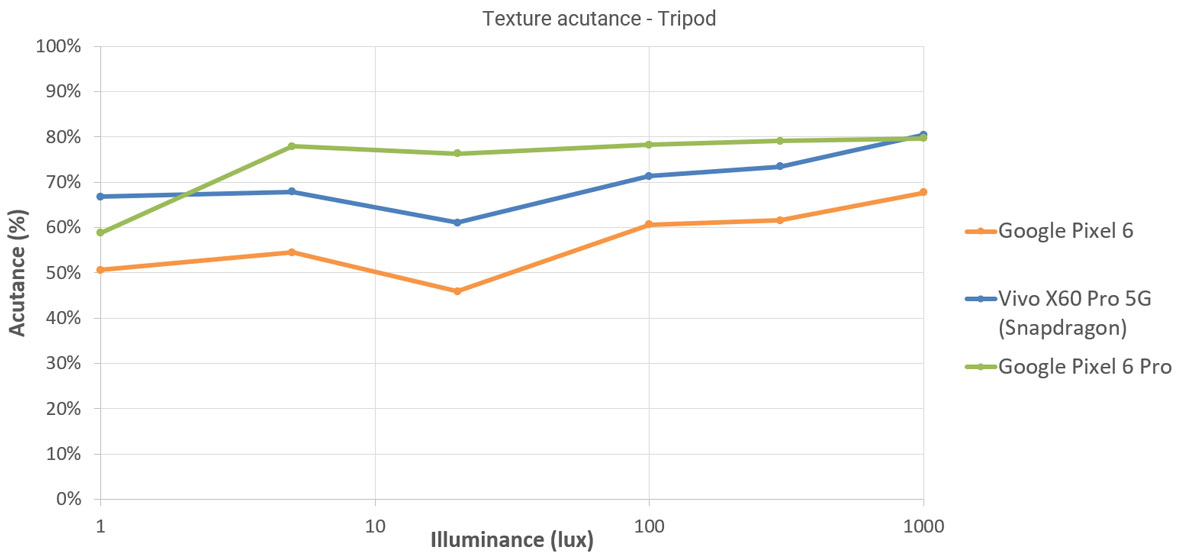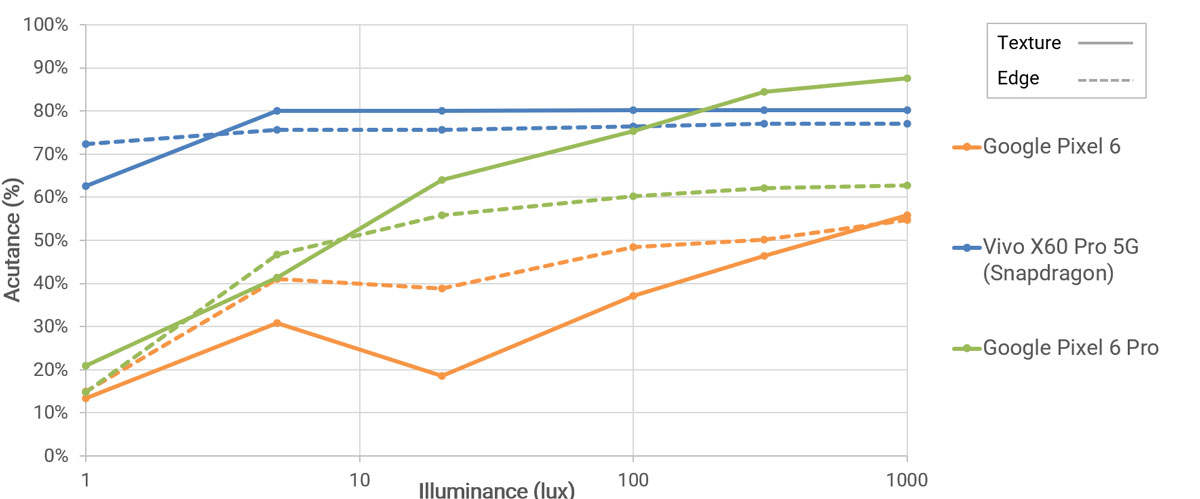The Google Pixel 6 is the junior partner to the Pixel 6 Pro in the US tech giant’s smartphone line, coming with slightly smaller dimensions and lower level specs in some areas than the flagship device. The Pixel 6 is powered by the same Tensor chipset as the Pro model but comes with a smaller display, less RAM and no dedicated tele camera on the back.
The front camera for selfie shooting is different, too. The Pixel 6 uses an 8 MP sensor behind a f/2.2 lens while the Pro captures 11 MP files through a f/2.2 lens. In addition the Pixel 6 is limited to 1080p front camera video while the Pro is capable of 4K resolution recording.
Let’s see how these specs translate into real life image results and how the Google Pixel 6 does in the DXOMARK Selfie tests.
Key front camera specifications:
- 8 MP sensor with 1.12µm pixels
- f/2.0-aperture
- 84° field of view
- Fixed focus
- 1080p at 30fps video
About DXOMARK Selfie tests: For scoring and analysis in our smartphone front camera reviews, DXOMARK engineers capture and evaluate over 1500 test images and more than 2 hours of video both in controlled lab environments and in natural indoor and outdoor scenes, using the camera’s default settings. This article is designed to highlight the most important results of our testing. For more information about the DXOMARK Selfie test protocol, click here.
Test summary
Scoring
Sub-scores and attributes included in the calculations of the global score.
Google Pixel 6


 41st
41st 5th
5thPros
- Good face exposure in photo and video
- Wide dynamic range
- Vivid color and nice skin tones
- Wide depth of field keeps most elements of the scene sharp
- Good white balance in video
- Low noise in bright light and indoor videos
With a DXOMARK Selfie score of 97, the Google Pixel 6 occupies one of the top positions in the High-End segment ranking and is only five points shy of its Ultra-Premium cousin Pixel 6 Pro. Overall performance is quite similar to the latter, including the good target exposure, wide dynamic range and nice colors and skin tones.
Differences are noticeable in texture and noise where the Pixel 6’s smaller sensor captures slightly less detail and produces higher levels of noise. On the plus side, the smaller sensor’s wider depth of field means larger portions of the scene are in focus. Despite similar color scores our testers observed slightly more visible orange casts on the Pixel 6 than on the Pro, as well as more artifacts, such as a slight orange tint to eyes or anamorphosis – perspective distortion of faces close to the edge of the frame.
This graph shows texture measurements in the lab. The Pixel 6 records lower levels of detail then the Pixel 6 Pro and Vivo X60 Pro in all light conditions.
Bokeh mode does a decent job at simulating the limited depth of field of a DSLR but the lack of a blur gradient means the end result looks a little unnatural.
When switching to video mode the Pixel 6’s 1080p resolution means that detail is much lower than on 4K-capable devices, such as the Pixel 6 Pro or Vivo X60 Pro.
In other test areas differences are less pronounced. Face exposure is good in all conditions but dynamic range is a little more limited than on the Pixel 6 Pro. White balance is generally accurate but skin tones are slightly less natural than on the Pro model. Noise is well-controlled overall and even slightly better than on the Pixel 6 Pro.
On the other hand the low levels of detail also impact on the focus score because a limited focus range reduces detail even further if the subjects moves slightly out of the fixed focus lens’ focal plane. This is especially true for close distance shots where faces often look blurry. Video stabilization is efficient in most conditions but a little more residual motion than on the Pixel 6 Pro is visible when walking while recording. Overall video artifacts are similar between the two devices but local loss of sharpness artifacts and ringing are more visible than on the Pro.





DXOMARK encourages its readers to share comments on the articles. To read or post comments, Disqus cookies are required. Change your Cookies Preferences and read more about our Comment Policy.